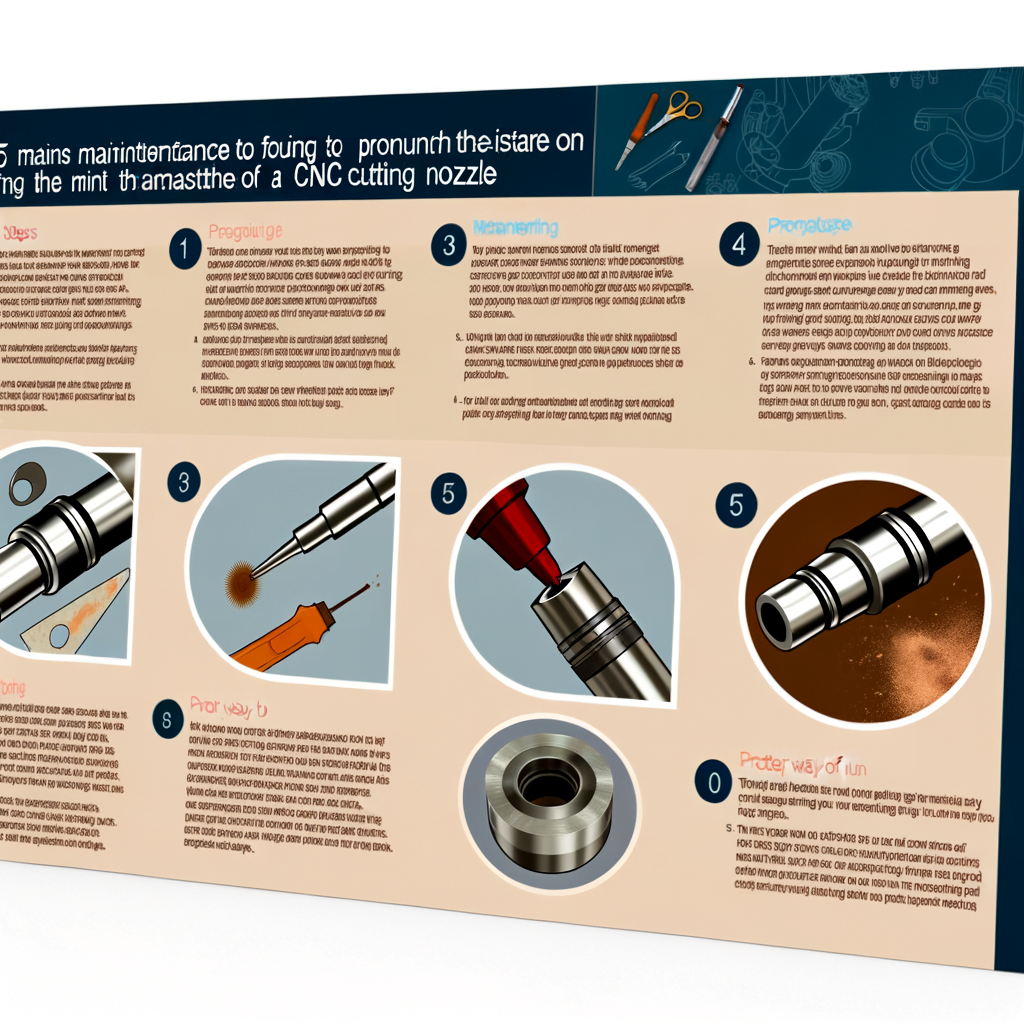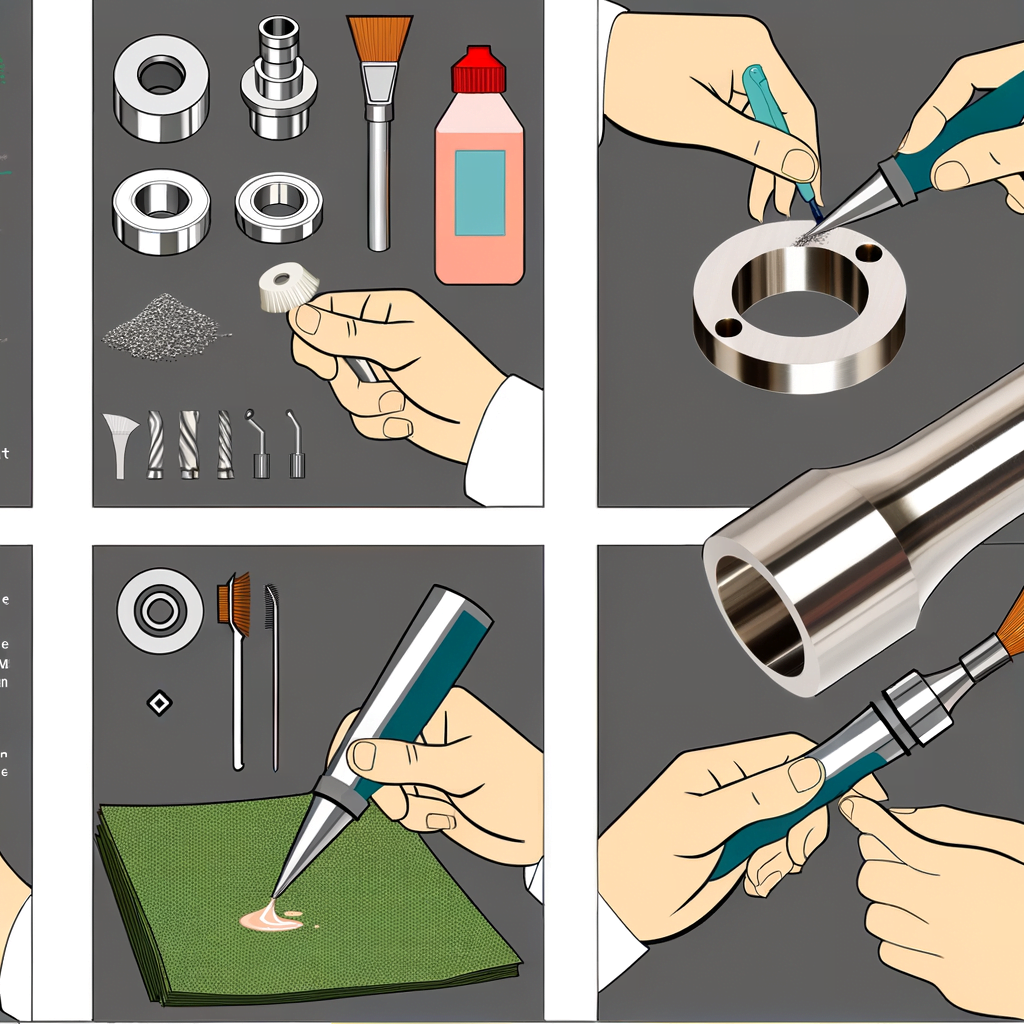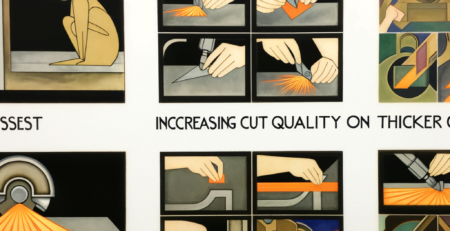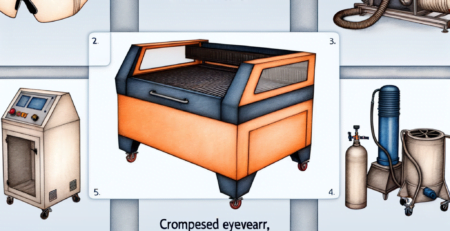Maintenance Tips to Extend the Life of Your CNC Cutting Nozzle
Sommario
“Maximize Precision, Minimize Downtime: Essential Maintenance for Your CNC Cutting Nozzle Longevity”
introduzione
Maintaining the longevity of a CNC cutting nozzle is crucial for ensuring consistent performance, precision in cutting operations, and cost-effectiveness in manufacturing processes. Proper care and regular maintenance can significantly extend the life of a CNC cutting nozzle, reducing the need for frequent replacements and minimizing downtime. Key maintenance tips include routine inspections, cleaning, alignment checks, and the use of appropriate consumables. By adhering to a comprehensive maintenance schedule, operators can enhance the functionality and durability of their CNC cutting equipment, leading to improved productivity and quality in their machining tasks.
Essential Cleaning Routines for Your CNC Cutting Nozzle
Maintenance Tips to Extend the Life of Your CNC Cutting Nozzle
In the realm of precision manufacturing, the CNC cutting nozzle stands as a critical component, one that demands meticulous care to ensure both the quality of the cut and the longevity of the equipment. Regular and proper maintenance routines are indispensable for the optimal performance of these nozzles, which are subjected to extreme temperatures and contaminants during the cutting process. By adhering to a set of essential cleaning and maintenance practices, operators can significantly extend the life of their CNC cutting nozzles, thereby safeguarding their investment and maintaining production efficiency.
Firstly, it is crucial to understand that the accumulation of debris and slag can not only affect the quality of the cut but also lead to premature wear and tear of the nozzle. Therefore, a daily inspection should be instituted as a fundamental practice. This involves a visual check for any signs of damage or obstruction. Any foreign materials present on the nozzle should be removed with a soft brush or a clean cloth, ensuring that the delicate parts are not scratched or damaged in the process.
Following the inspection, a more thorough cleaning should be performed regularly. This involves disassembling the nozzle components, if possible, to access areas that are not exposed during normal operation. Specialized cleaning solutions designed for CNC cutting equipment can be used to dissolve any built-up residue. It is imperative to follow the manufacturer’s instructions when using these solutions to avoid any chemical damage to the nozzle parts.
Moreover, the use of compressed air can be highly effective in dislodging particles from the nozzle’s interior. However, caution must be exercised to ensure that the pressure is not so high as to cause harm to sensitive components. A gentle stream of air can remove dust and small particles that could potentially clog the nozzle, leading to inconsistent cutting performance.
Another aspect of maintenance that cannot be overlooked is the alignment of the nozzle. Proper alignment ensures that the cutting medium, whether it be a laser beam or plasma arc, is focused correctly, thereby reducing wear on the nozzle and improving cut quality. Misalignment can cause the cutting medium to strike the sides of the nozzle, leading to rapid deterioration. Regular checks and adjustments, as needed, will help maintain alignment and extend the nozzle’s service life.
Lubrication also plays a pivotal role in the maintenance of CNC cutting nozzles. Moving parts should be lubricated with appropriate products to minimize friction and prevent seizing. This not only prolongs the life of the nozzle but also maintains the precision of the cutting process. It is essential to use lubricants that are compatible with the nozzle materials and the cutting environment to prevent any adverse reactions.
Lastly, it is important to keep a record of maintenance activities. This log will help track the frequency of cleaning and replacement, providing valuable data that can be used to optimize maintenance schedules. By analyzing this information, operators can identify patterns in wear and tear, allowing for proactive maintenance and replacement before failures occur.
In conclusion, the diligent application of these essential cleaning routines will not only extend the life of your CNC cutting nozzle but also ensure that your equipment operates at peak performance. Regular inspections, thorough cleanings, proper alignment, and adequate lubrication are all cornerstones of a robust maintenance program. By committing to these practices, manufacturers can avoid costly downtime and maintain a competitive edge in the precision manufacturing industry.
Calibration and Alignment: Key Practices for CNC Nozzle Longevity

Maintenance Tips to Extend the Life of Your CNC Cutting Nozzle
In the realm of precision manufacturing, the CNC cutting nozzle stands as a critical component, one that demands meticulous care to ensure both the quality of the output and the longevity of the equipment. Calibration and alignment are the cornerstones of maintaining a CNC cutting nozzle, and adherence to these practices can significantly extend its service life.
The calibration of a CNC cutting nozzle is a delicate process that involves setting the equipment to produce an output that meets exact specifications. This process ensures that the nozzle delivers a consistent and precise stream or flame, which is essential for achieving the desired cut quality. Regular calibration checks are imperative, as even the slightest deviation from the optimal settings can lead to subpar results and increased wear on the nozzle.
Moreover, proper alignment is just as crucial as calibration. The alignment of the nozzle affects the direction and focus of the cutting stream or flame. If the nozzle is misaligned, it can cause uneven wear and tear, leading to premature failure. It can also result in poor cut quality, which may necessitate additional finishing work or, in the worst-case scenario, result in the scrapping of the material.
To maintain optimal performance, it is recommended that operators perform routine inspections of the nozzle. This involves checking for signs of damage, such as cracks or deformities, which can arise from the high-stress environment of CNC cutting. Any damage detected should be addressed immediately to prevent further deterioration.
Another aspect of maintenance is ensuring that the nozzle is clean and free from any obstructions. Over time, debris and buildup can accumulate within the nozzle, affecting the flow and precision of the cutting medium. Regular cleaning with appropriate tools and solutions can prevent such issues, thereby maintaining the integrity of the cutting process.
Furthermore, the use of high-quality consumables cannot be overstated. Inferior materials can introduce impurities and inconsistencies that not only compromise the quality of the cut but also contribute to the accelerated wear of the nozzle. Investing in premium consumables is a wise decision that pays off in the long run by reducing the frequency of nozzle replacements and maintenance issues.
In addition to these practices, it is essential to follow the manufacturer’s recommended maintenance schedule. Manufacturers provide guidelines that are tailored to the specific requirements of their equipment. Adhering to these recommendations can help in identifying potential issues before they escalate into major problems.
Lastly, operator training plays a pivotal role in the maintenance of CNC cutting nozzles. Well-trained operators are more likely to follow best practices in handling and maintaining the equipment. They are also better equipped to recognize early signs of wear or malfunction, allowing for timely intervention.
In conclusion, the diligent application of calibration and alignment practices, coupled with routine inspections, cleaning, use of high-quality consumables, adherence to manufacturer guidelines, and operator training, forms a comprehensive maintenance strategy. By embracing these key practices, one can significantly enhance the performance and extend the life of a CNC cutting nozzle, ensuring that it remains a reliable asset in the precision manufacturing process.
The Importance of Regular Inspections for CNC Cutting Nozzle Durability
Maintenance Tips to Extend the Life of Your CNC Cutting Nozzle
The longevity and performance of CNC cutting nozzles are pivotal to the efficiency and quality of the cutting process in manufacturing. These nozzles, often subjected to extreme temperatures and pressures, are prone to wear and tear, which can significantly impact their functionality. To ensure their durability, regular inspections are essential, and with proper maintenance, the life of a CNC cutting nozzle can be substantially extended.
Firstly, it is crucial to understand that the nozzle’s condition directly affects the precision of the cut. A worn or damaged nozzle can lead to poor cut quality, increased material waste, and even machine downtime. Therefore, incorporating routine checks into the maintenance schedule is not just recommended but necessary. During these inspections, look for signs of damage, such as deformation or clogging, which can occur from accumulated slag or from the use of incorrect gas pressures.
Moreover, the frequency of these inspections should be in line with the usage of the machine. For high-volume operations, daily checks may be required, while less frequent use might necessitate weekly or monthly inspections. It is also important to follow the manufacturer’s guidelines for maintenance and inspection, as they provide specific instructions tailored to the nozzle’s design and material.
Another critical aspect of maintenance is the proper handling and storage of nozzles. Mishandling can cause micro-abrasions or deformities that compromise the nozzle’s performance. Always use appropriate tools when installing or removing nozzles and store them in a clean, dry place where they are protected from accidental damage.
Furthermore, the use of high-quality consumables cannot be overstated. Inferior quality materials can lead to premature nozzle wear and may contain impurities that can clog or damage the nozzle. Investing in quality consumables is an investment in the nozzle’s lifespan and the overall quality of the cutting process.
In addition to regular inspections and proper handling, it is also essential to ensure that the cutting parameters are optimized for the material being cut. Incorrect settings can cause excessive wear or even damage to the nozzle. Parameters such as gas type, pressure, and cutting speed should be carefully calibrated according to the material’s properties and thickness.
Cleaning the nozzle is another maintenance step that should not be overlooked. A buildup of spatter or slag can affect gas flow and the quality of the cut. Regular cleaning with appropriate tools and solutions can prevent such issues. However, it is important to avoid harsh chemicals or abrasive tools that could damage the nozzle.
Lastly, training operators on the correct usage and maintenance of CNC cutting nozzles is vital. Knowledgeable operators are more likely to recognize early signs of wear and take the necessary steps to prevent further damage. They can also ensure that the machine is operated within its optimal parameters, reducing the risk of nozzle overuse or misuse.
In conclusion, the durability of CNC cutting nozzles is heavily dependent on regular inspections and proper maintenance. By incorporating routine checks, handling nozzles with care, using quality consumables, optimizing cutting parameters, cleaning the nozzle regularly, and training operators, the life of a CNC cutting nozzle can be significantly extended. These practices not only contribute to the longevity of the nozzle but also to the overall efficiency and cost-effectiveness of the CNC cutting process.
Conclusione
Conclusione:
To extend the life of your CNC cutting nozzle, it is essential to adhere to a regular maintenance schedule that includes routine inspections, proper cleaning, and timely replacement of consumable parts. Ensuring the correct alignment and height settings, using appropriate gas pressures and flow rates, and avoiding collisions or misuse of the nozzle will also contribute to its longevity. By implementing these maintenance tips, operators can minimize downtime, reduce operational costs, and maintain consistent cutting quality over an extended period.





Lascia un commento